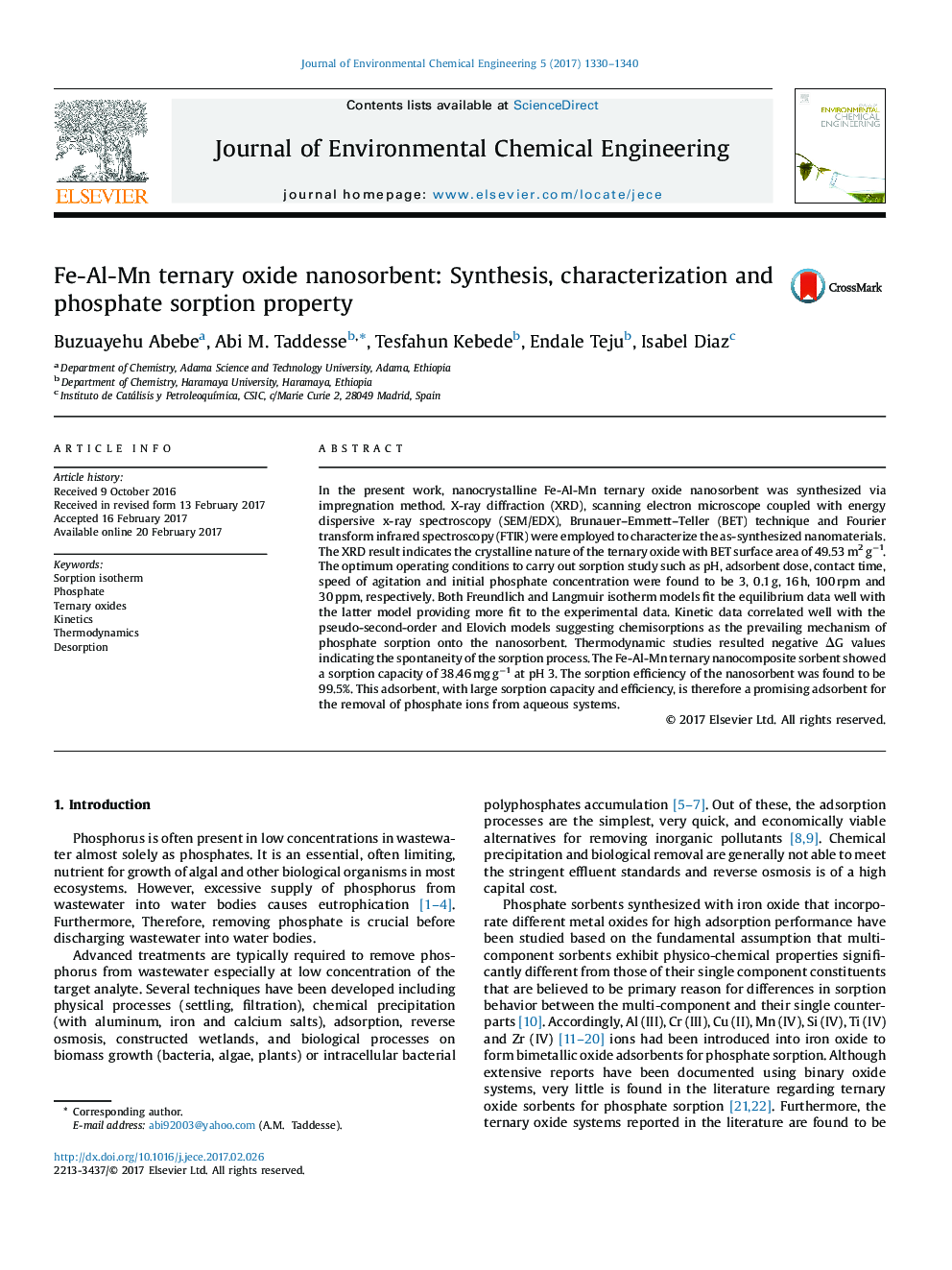| Article ID | Journal | Published Year | Pages | File Type |
|---|---|---|---|---|
| 4908471 | Journal of Environmental Chemical Engineering | 2017 | 11 Pages |
Abstract
In the present work, nanocrystalline Fe-Al-Mn ternary oxide nanosorbent was synthesized via impregnation method. X-ray diffraction (XRD), scanning electron microscope coupled with energy dispersive x-ray spectroscopy (SEM/EDX), Brunauer-Emmett-Teller (BET) technique and Fourier transform infrared spectroscopy (FTIR) were employed to characterize the as-synthesized nanomaterials. The XRD result indicates the crystalline nature of the ternary oxide with BET surface area of 49.53 m2 gâ1. The optimum operating conditions to carry out sorption study such as pH, adsorbent dose, contact time, speed of agitation and initial phosphate concentration were found to be 3, 0.1 g, 16 h, 100 rpm and 30 ppm, respectively. Both Freundlich and Langmuir isotherm models fit the equilibrium data well with the latter model providing more fit to the experimental data. Kinetic data correlated well with the pseudo-second-order and Elovich models suggesting chemisorptions as the prevailing mechanism of phosphate sorption onto the nanosorbent. Thermodynamic studies resulted negative ÎG values indicating the spontaneity of the sorption process. The Fe-Al-Mn ternary nanocomposite sorbent showed a sorption capacity of 38.46 mg gâ1 at pH 3. The sorption efficiency of the nanosorbent was found to be 99.5%. This adsorbent, with large sorption capacity and efficiency, is therefore a promising adsorbent for the removal of phosphate ions from aqueous systems.
Related Topics
Physical Sciences and Engineering
Chemical Engineering
Chemical Engineering (General)
Authors
Buzuayehu Abebe, Abi M. Taddesse, Tesfahun Kebede, Endale Teju, Isabel Diaz,
